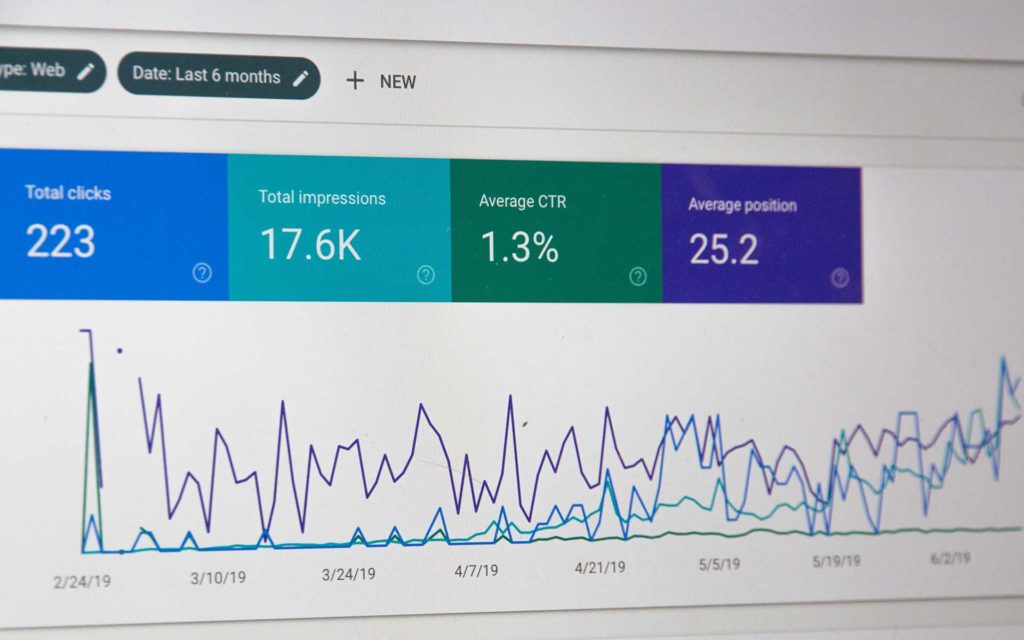
Are you tired of your B2B website not getting the attention it deserves? Have you been trying to improve your SEO with little to no success? Well, my friend, you’ve come to the right place. Today, we’ll dive deep into the world of B2B SEO strategy and unlock the secrets to help your business climb the search engine rankings and reach your target audience more effectively. Get ready to embark on a journey that will transform your B2B SEO approach and bring your business to new heights.
Short Summary
- Understanding B2B SEO requires specialized keyword research and content creation to reach professionals.
- Crafting buyer personas, analyzing data & identifying needs/wants can help tailor services for buyers.
- Mastering keyword research, optimizing on page elements & creating high quality evergreen content are key to successful B2B SEO strategy.
Defining B2B SEO
B2B (business-to-business) SEO is a type of search engine optimization specifically designed to optimize content for businesses targeting other businesses. In B2B, the target audience is different: rather than targeting individual consumers, B2B SEO focuses on catering to the needs of professionals and decision-makers in various industries.
To succeed in B2B SEO, it’s crucial to create content that addresses the pain points and interests of your target audience. This includes crafting content on “shoulder topics” – those related to your business but not directly tied to your product or service.
Link building also plays a significant role in B2B SEO, as it helps create connections with other businesses and websites, leading to more visitors and better search engine rankings.
Differences Between B2B and B2C SEO
When comparing B2B and B2C SEO, the key differences lie in the sales cycle, target audience, and keyword targeting. B2B SEO usually has a longer sales cycle, more people involved in the decision-making process, and higher prices. On the other hand, B2C SEO has more search volume and fewer decision-makers.
In B2B SEO, we need to focus on high-value, low-volume keywords since the B2B space is smaller than B2C. B2B SEO tends to target keywords that executives search for while they’re at work, while B2C SEO aims at keywords that people use in their daily lives.
Choosing straightforward keywords is crucial in B2B SEO, as buyers are more likely to search for simple terms rather than buzzwords.
Developing Your B2B Buyer Persona
A buyer persona is a representation of your ideal customer, and developing these personas is absolutely essential for successful B2B SEO. Since B2B buying groups usually consist of various people from different departments, crafting content that meets their needs and preferences will help you reach a wide range of B2B buying groups.
The more detailed the buyer persona, the better you can tailor your services to the actual customers your personas represent.
Analyzing Data
When creating buyer personas, it’s important to analyze customer demographics, behavior, and psychographics. Data can be gathered from different sources like market research, survey results, and talking to current customers, past buyers, and prospects that fit your target audience.
By examining this data, you can gain insights into your customers’ needs, preferences, and behavior patterns, which will help you create more effective content and marketing strategies.
Identifying Needs and Wants
B2B buyers are looking for a personalized and easy purchasing experience, speed, and assurance that potential suppliers meet their qualifications. They may be involved in different buying situations, such as one-time purchases, recurring purchases, or long-term contracts.
When choosing potential suppliers, buyers should look for those that provide a custom and straightforward buying experience, quick delivery, and are qualified to offer the product or service they need. Understanding these needs and wants helps you create content that resonates better with your audience.
Mastering Keyword Research for B2B SEO
Mastering keyword research for B2B SEO involves targeting long-tail keywords and low difficulty keywords, conducting competitor analysis, and utilizing keyword research tools.
By identifying the right keywords, you can improve your content, boost your search engine rankings, and attract your target audience more effectively.
Long-Tail Keywords and Low Difficulty Keywords
In B2B SEO, it’s essential to focus on long-tail keywords and low-volume keywords. Long-tail keywords are phrases that include a specific keyword and are often searched by a smaller but highly interested group of people.
These low-volume keywords are tailored to a select group of people who are likely to be extremely interested in the content and what is being offered. By targeting these keywords, you can drive more targeted and valuable traffic to your website.
Competitor Analysis
Analyzing your competitors is a crucial aspect of keyword research in B2B SEO. By examining the keywords your competitors are ranking for, you can identify which keywords you should target for better B2B SEO.
This information can also help you improve your keyword research and optimize your content for those keywords.
Utilizing Keyword Research Tools
Keyword research tools, such as Google Keyword Planner, Moz Keyword Explorer, and Ahrefs Keyword Explorer, can assist you in finding the most relevant and profitable keywords for your website. They also provide valuable insights into new keywords, search trends, and the success of your SEO efforts.
By leveraging these tools, you can enhance your keyword research and develop a more comprehensive B2B SEO strategy.
Optimizing On-Page Elements
Optimizing on-page elements such as metadata, H1 tags, page titles, and images is essential for higher rankings in search engine results. Ensuring that these elements are optimized will help search engines understand the content of a page and how it should be indexed, ultimately improving your website’s position in search engine results pages (SERPs).
By taking the time to optimize these elements, you can ensure that your website is more visible to potential customers and that it will rank higher in SERPs. This will help you reach more people and increase your website’s visibility.
Metadata Optimization
Metadata optimization is key for improving click-through rate and getting higher rankings in search engine results. B2B landing pages should have unique content with an ideal word count of 500, 1000, or even 2000 words to increase their search engine visibility.
By optimizing your metadata, including page titles and meta descriptions, you can enhance your site’s search engine performance and capture more organic traffic.
H1 Tags and Page Titles
Metadata optimization is key for improving click-through rate and getting higher rankings in search engine results. B2B landing pages should have unique content with an ideal word count of 500, 1000, or even 2000 words to increase their search engine visibility.
By optimizing your metadata, including page titles and meta descriptions, you can enhance your site’s search engine performance and capture more organic traffic.
Image Optimization
Image optimization is the process of reducing the file size of images on a website without sacrificing quality. It helps to improve page load times and user experience by delivering high-quality images in the right format, dimension, size, and resolution.
Alt text with keywords can provide contextual information to web crawlers that help them understand and rank your page. Without such information, they are unable to interpret or “see” the images. By optimizing your images and their metadata, you can enhance your B2B SEO strategy and improve your website’s performance.
Crafting High-Quality Content
Crafting high-quality content is important for successful B2B SEO, including evergreen content, thought leadership, and formatting for accessibility.
By producing valuable, relevant, and engaging content that caters to the needs of your target audience, you can strengthen your brand’s reputation and boost your search engine rankings.
Evergreen Content
Evergreen content is content that remains valuable and relevant to readers regardless of how much time passes. This type of content is not connected to current events or trends, but can be refreshed to stay up-to-date. Examples of evergreen content include “how-to” guides and content that answers common questions about an industry.
By creating evergreen content, you can provide your audience with useful information that remains relevant over time, attracting more organic traffic and improving your B2B SEO.
Thought Leadership and Branding
Thought leadership is about creating original content to position your brand as a knowledgeable and authoritative figure in your industry. This type of content isn’t about selling products or services, but providing valuable insights, opinions, and predictions.
Thought leadership can help build customer trust and credibility in the industry, as well as raise your brand awareness. Examples of thought leadership content include webinars, blogs, podcasts, guest posts, ebooks, videos, or social media.
Formatting and Accessibility
Content formatting plays a crucial role in making your content more accessible and engaging for your audience. Organizing your content in a clear way with lots of line breaks, white space, appropriately formatted section headings, a table of contents, and attractive on-page elements (like graphics) can enhance the user experience and make your content more appealing.
By focusing on formatting and accessibility, you can make your content more reader-friendly and improve your B2B SEO strategy.
Building a Robust Link Strategy
A robust link strategy is essential for successful B2B SEO. Link building includes internal linking, external link building, monitoring and disavowing toxic backlinks.
By building a strong link strategy, you can boost your website’s authority and rankings, ultimately driving more traffic and attracting your target audience.
Internal Linking
Internal linking is a technique used in SEO to link one page of a website to another page of the same website. It helps to create a structure of information and enhance the user experience. Additionally, internal links help Google easily find, index, and understand all the pages on your website.
By focusing on internal linking and connecting your web pages to relevant keywords, you can improve your website’s search engine rankings and user experience.
External Link Building
External link building is the process of getting other websites to link back to your domain. It’s important to make sure the links are of good quality, relevant, and plentiful, as these factors help to boost your website’s ranking in search engine results pages (SERPs).
By focusing on external link building and getting links from trustworthy sites, you can further enhance your B2B SEO.
Monitoring and Disavowing Toxic Backlinks
Backlinks deemed to be toxic can have a detrimental effect on a website’s search engine rankings. These links are unnatural and should be removed as soon as possible. It’s essential to keep tabs on and remove any toxic backlinks to make sure your website isn’t associated with any malicious or low-quality sites. This helps maintain a positive image and stops search engines from penalizing your website.
You can use Google’s Disavow Tool through the Google Search Console to remove toxic backlinks and maintain your website’s search engine rankings.
Staying Ahead with Technical SEO
In order to stay ahead in the competitive world of B2B SEO, it’s important to focus on technical SEO aspects such as mobile optimization, page speed improvements, and monitoring site health with Google Search Console.
By staying on top of these technical factors, you can ensure that your website is always optimized and ready to face any changes in the ever-evolving world of SEO.
Mobile Optimization
Mobile optimization is the process of making sure that people visiting your website from their phones have the best experience possible. With the majority of search engine users being on mobile devices, it’s crucial to optimize your website for mobile to rank well on Google’s mobile-first index.
By focusing on mobile optimization, you can provide an engaging and user-friendly experience for mobile users, ultimately improving your B2B SEO performance.
Page Speed Improvements
Page speed optimization is all about making your website’s pages load faster, which can greatly improve your user experience, help you with your marketing, and even boost your SERP positioning. Tools like GTMetrix or Google PageSpeed Insights can help you identify areas for improvement and implement changes to speed up your website.
By focusing on page speed improvements, you can enhance your B2B SEO strategy and provide a better experience for your visitors.
Monitoring Site Health with Google Search Console
Google Search Console is a free service offered by Google that helps website owners keep an eye on, maintain, and sort out any issues with their site’s presence in Google Search results. It has a range of tools and resources that can help website owners, webmasters, marketers, and SEO professionals keep track of their website’s performance.
By monitoring your website’s health with Google Search Console, you can identify any potential issues, such as crawl errors or broken links, and take action to fix them.
Measuring and Adjusting Your B2B SEO Strategy
Measuring and adjusting your B2B SEO strategy is crucial to ensure that your efforts are successful. By tracking your progress with analytics tools, adapting to algorithm changes, and being consistent in your SEO efforts, you can continuously improve your website’s performance and stay ahead of your competitors.
Tracking Progress with Analytics Tools
Analytics tools, such as Excel, Microsoft Power BI, and Tableau, can help you track and analyze data related to website traffic and user behavior. By monitoring your website’s performance, you can identify areas for improvement and measure the success of your SEO strategies.
Google Search Console can also be used to troubleshoot website issues and fix any errors that may be affecting your site’s performance.
Adapting to Algorithm Changes
Search engine algorithms are constantly changing, and it’s important to adapt your B2B SEO strategy to stay ahead of these changes. By staying informed about algorithm updates, using keyword research tools to find new opportunities, and tracking your website performance, you can stay ahead of algorithm changes and maintain your website’s search engine rankings.
Consistency Is Key
Consistency is crucial in B2B SEO strategy, as it helps search engine bots easily find the keywords on your site, which can help boost your ranking in search results.
By consistently creating and publishing content that meets customers’ search intent, optimizing on-page elements, and building a strong link strategy, you can ensure that your B2B SEO efforts are successful and drive more organic traffic to your website.
Summary
In conclusion, unlocking the secrets of B2B SEO strategy involves understanding the unique aspects of B2B SEO, developing buyer personas, mastering keyword research, optimizing on-page elements, crafting high-quality content, building a robust link strategy, staying ahead with technical SEO, and measuring and adjusting your strategy. By focusing on these key areas and being consistent in your efforts, you can boost your website’s search engine rankings, attract your target audience, and ultimately drive more organic traffic and business growth.
Now that you have the tools and knowledge to unlock the secrets of B2B SEO strategy, it’s time to put what you’ve learned into action. With dedication, consistency, and a clear plan, your B2B website will climb the search engine rankings and reach new heights of success. So, what are you waiting for? Get started on your journey to B2B SEO mastery today!
Frequently asked questions
What is the B2B SEO strategy 2023?
In 2023, B2B SEO strategies should be focused on understanding customer search intent and creating content that meets their needs. Additionally, businesses should ensure that technical SEO is optimized and prioritize building out the internal and external link profiles to boost their domain authority.
Through these efforts, B2B organizations can create an SEO strategy to attract targeted leads and drive conversions.
What are the top 5 SEO strategies?
To boost your website’s rankings and increase organic traffic, these are the top 5 SEO strategies you should focus on: keyword research, on-page optimization, content creation & optimization, link building, and technical SEO.
Keyword research is the process of finding and analyzing the words and phrases that people use to search for content related to your business. It helps you understand what topics and keywords your target audience is searching for, so you can create content that meets their needs.
On-page optimization is the process.
Does SEO matter for B2B?
Yes, SEO matters for B2B as it can help you increase your website traffic, build loyalty and trust, and create more actionable content to get conversions.
SEO best practices work in both B2C and B2B, so optimizing your B2B content strategy is key to the success of your business.
Is SEO important for B2B marketing?
Yes, SEO is an important element of B2B marketing. A well-executed SEO strategy can ensure that your website appears in the top search results and helps drive leads to your business.
Ultimately, SEO can give you a competitive advantage and help you stand out from the rest of your competitors.









